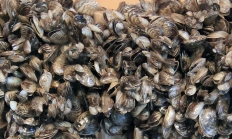ODFW's Oregon Conservation and Recreation Advisory Committee meets Dec. 2
ODFW's Oregon Conservation and Recreation Advisory Committee meets Dec. 2 SALEM, Ore. – The Oregon Conservation and Recreation Advisory Committee will meet on Tuesday, Dec. 2, from 1 p.m. to 3:30 p.m. The Conservation and Recreation Advisory Committee will be reviewing application questions ahead of…





